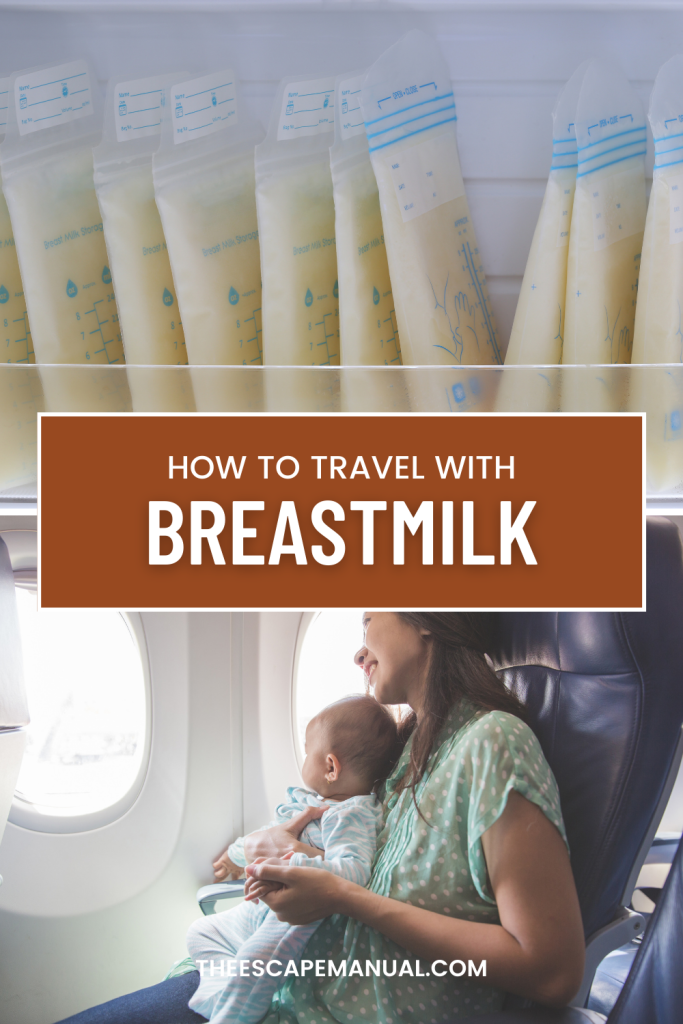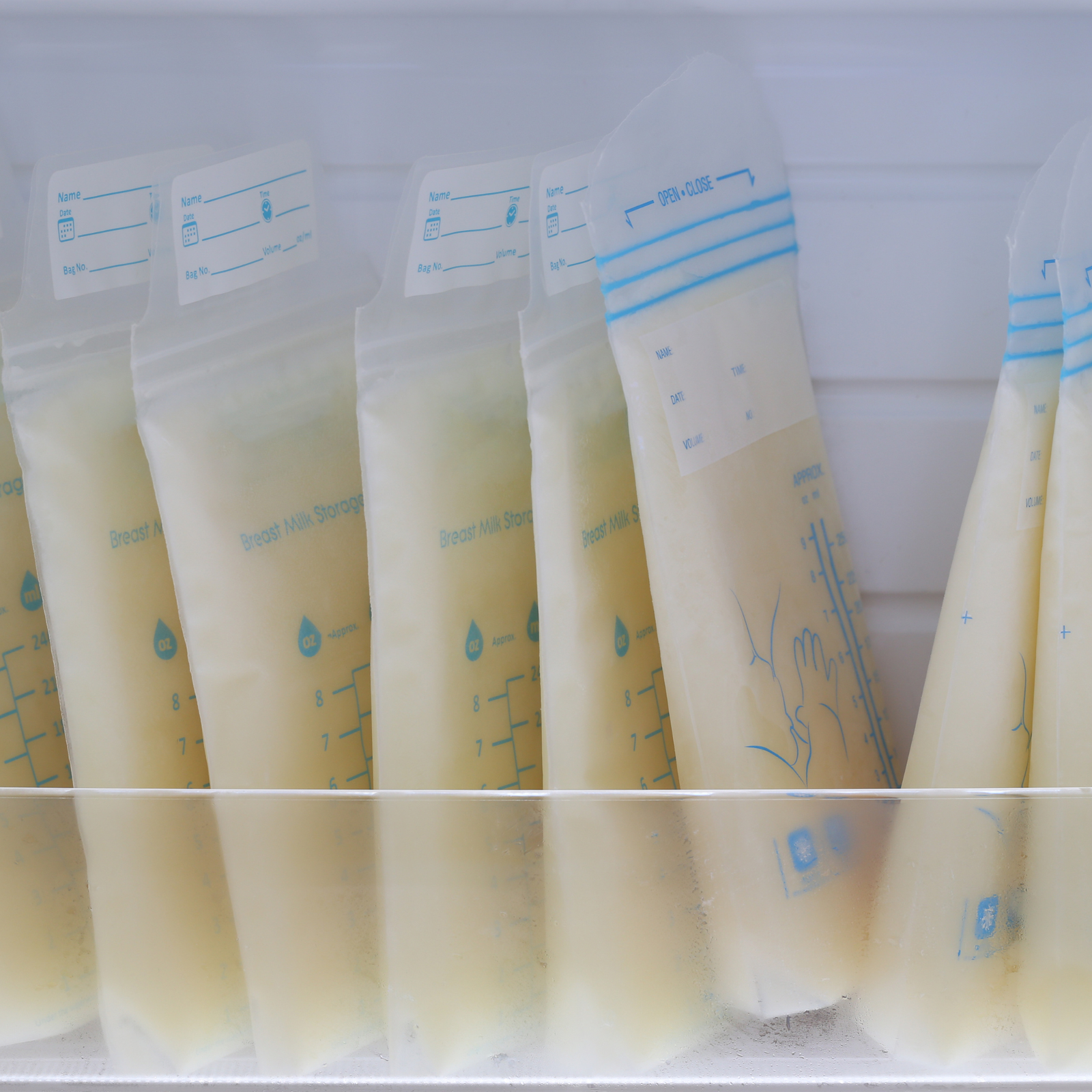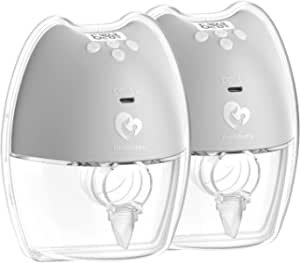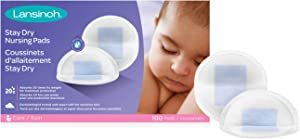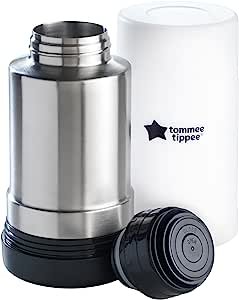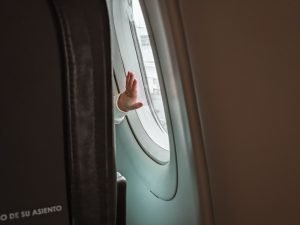Whether you’re traveling by plane, train or car, here’s what you need to know about how to travel with frozen breastmilk.
This post contains affiliate links and is for general information purposes only. Please visit my disclosure policy for more information.
Traveling as a new mom is hard. Gone are the days when you could just pack everything you need the night before, and be sure that you can get anything you missed when you get there.
Once you add a little human into the mix, there’s a lot more to navigate.
You need to think about all the extra baby supplies you’ll need. If you’re also breast feeding, you’ll also need to consider your babies feeding supplies as well as how to travel with breastmilk.
It’s important that your baby has easy access to their food while you’re on the go and it can be overwhelming trying to sort through all the information and make the best decision for you and your little one.
In this blog post, we will discuss key tips and tricks that will help make transporting frozen breast milk a breeze. Whether you’re traveling by car or plane, or need to keep the milk cold for a few hours or an entire week, we’ll help you learn from our mistakes by sharing how to travel with frozen breast milk!
How NOT To Travel With Breast Milk
Our first trip as parents was a disaster!
I was breastfeeding at the time, and we made the last minute decision to leave our baby behind for 38 hours. I would, of course leave enough breastmilk to sustain him while we were away.
I also planned to pump regularly throughout the time we were gone.
You’d think that was enough of a plan right?
It wasn’t.
As we packed up our things and headed for the airport (on the way back home), we soon realized that we had no way of keeping our breastmilk cold once it left the hotel fridge.
We had an approximately 7 hours of travel time where the breastmilk I had pumped throughout our trip couldn’t be kept cold.
I was devastated.
The idea of dumping all of that milk out seemed improbable.
So I did the first thing that came to my mind. I filled up ziplock bags with ice from the ice machine at our hotel and proceeded to pack that in the insulated lunch bag we purchased last minute. I stuffed the breastmilk bags in there and figured if I could keep it cold enough, I would change out the ice every couple of hours till I got home.
Long story short, my plan did not work. I ended up having to dump all the breast milk I worked hard to pump.
There are many lessons you could learn from my story.
Keep reading to learn from my mistakes, and find out what you should do instead when traveling with breastmilk.
I’ll also share a list of breastfeeding essentials that you need to make sure to pack if your’e considering traveling with breastmilk.

Why Traveling With Frozen Breast Milk Is Important
Before we get into the tips, I want to discuss the various reasons you may choose to travel with frozen breastmilk.
Of course, you know your baby best and it’s ultimately up to you to decide whether or not you will travel with breastmilk.
If you exclusively breastfeed- your baby never drinks from a bottle, and you prefer not to interrupt their usual feeding routine, then you may choose not to travel with frozen breastmilk.
If you exclusively pump, or your baby sometimes drinks from a bottle, you’ll find these considerations helpful.
1. Ensures Your Baby Continues to Get Breast Milk
When traveling, it can be difficult to continue breastfeeding as normal. Having a stash of frozen breast milk ensures that your baby can still get the benefits of breast milk, even if you’re on the move. It’s often easier to warm a bottle and give to your baby than stop to find a comfortable place to nurse.
It depends on your travel situation
2. You Are Traveling Without Your Baby
If you’re a breastfeeding mom who has to travel without your baby, you’ll soon realize that you have to keep up the regular feeding schedule to avoid being engorged and also to maintain your milk production.
You’ll need to pump regularly to do this. Instead of dumping the milk you pump, you can freeze it and save for future use.
3. Provides Peace of Mind
Traveling can be stressful, especially when it comes to the well-being of your baby. Knowing that you have a stash of frozen breast milk can provide peace of mind, knowing that your baby has a reliable source of nutrition.

Things To Consider Before Traveling With Frozen Breast Milk
Whether you’re traveling by car, plane, or train, there are a few things to keep in mind when traveling with breast milk.
First and foremost, breast milk is perishable. So, it’s important to keep it cool and avoid exposing it to extreme temperatures. The best way to transport breastmilk is to freeze it.
You can store breast milk in a cooler with ice packs or in a thermal bag designed for breast milk storage. If you’re traveling for more than a few hours, it’s also a good idea to bring along a small cooler or ice pack for on-the-go feedings.
Keep in mind that frozen breastmilk needs to be used within 24 hours after thawing.
Quantity of Breast Milk to Carry
When traveling with frozen breast milk, the amount you can bring will depend on the airline you are traveling with, as well as the duration of your trip.
Most airlines allow breastfeeding mothers to bring a reasonable amount of milk on board.
This can vary from airline to airline, so be sure to check their policy before you fly.
You may also want to consider checking with your destination’s customs regulations regarding the quantity of milk you are allowed to bring.
Transportation Mode
The mode of transportation you choose can also have an impact on how you pack and transport your frozen breast milk.
If you’re traveling by car, you’ll be able to bring a larger amount of milk.
However, you will need to make sure that the milk stays cold throughout the journey.
If you are traveling by airplane, you will need to pack the milk in a way that meets TSA regulations.
Destination Climate
The climate of your destination can also impact how you pack and transport your milk.
If you’re traveling to a warmer climate, you’ll need to make sure your milk stays frozen during the journey.
You may want to consider packing extra ice packs to ensure it stays cold.
When traveling with frozen breast milk, it’s essential to plan ahead and take the necessary precautions to ensure your milk stays safe and secure.
Additional resources for traveling with breast milk:
Flying with Frozen Breast Milk
The Transportation Security Administration (TSA) allows for breast milk in both carry-on and checked luggage. It’s important to remove the breast milk from your bag during the screening process. Frozen gel packs and other accessories required to cool breast milk are also allowed in carry-on.
It’s important to check with your airline for specific requirements, especially if you are using dry ice. Some hotels or lodging may not have freezers available in guest rooms, so it’s important to plan ahead and find accommodations that can accommodate your frozen breast milk.
Traveling with frozen breast milk can be stressful, but knowing why it’s important and how to pack it safely can provide peace of mind and ensure that your baby continues to get the benefits of breast milk while you’re away.
How to Prepare Breast Milk for Travel
The first thing you’ll need to know is how to prepare and pack your breastmilk so that it’s ready for transport.
Here are some tips for preparing your breast milk for travel:
Freezing Breast Milk
When freezing your breast milk, it’s important to use breast milk storage bags that are designed for freezing. These bags are made of thicker, more durable plastic that won’t break or leak during transport.
Be sure to label each bag with the date the milk was expressed, so that you can easily identify which bag to use first.
It’s also a good idea to write your name on the bag, especially if you’re traveling with other people. That way you can easily identify which bag is yours if you ever have to leave it in the fridge to thaw.
When placing your bags in the freezer, it’s important to lay them flat so that they remain flat when they freeze. This makes the bags much easier to pack.
Packaging Frozen Breast Milk
When packing your frozen breast milk for travel, use an insulated cooler bag or box with ice packs to keep the milk frozen during transport.
Place the bags of breast milk in the cooler, making sure they are flat and not stacked on top of each other. This will ensure that the milk freezes and thaws evenly.
How to Transport Frozen Breast Milk
When you need to travel with frozen breast milk, it’s important that your milk stays frozen throughout the journey. There are different ways to transport frozen breast milk, and the most common ones are using cooler bags, dry ice, or refrigerated shipping.
Using Cooler Bags
One of the easiest ways to transport frozen breast milk is by using cooler bags.
When using a cooler bag, ensure that it is well-insulated and can hold your milk without any spills. Here are the steps to follow when using a cooler bag:
- Line the bottom of your cooler with newspaper.
- Place your milk bags in the cooler.
- Fill any extra space with more crumpled newspaper to ensure that the cooler stays cold for as long as possible.
- Place another layer of newspaper on top of the milk.
- Put frozen gel packs or ice blocks on top of the newspaper.
- Seal the cooler with duct tape to improve the seal and prevent it from opening up and spilling out the milk, if knocked over.
- Keep the cooler closed until you have reached your destination freezer.
Using this method can keep your milk cool for 24-48 hours.
Ensure that you keep the cooler out of direct sunlight or in a hot car as that will accelerate any defrosting.
Also be aware that opening and closing the cooler bag during travel can cause the milk to start thawing.
You don’t want this. Pack a separate bag with cold breastmilk that you can give to your baby during the journey.
Using Dry Ice
Dry ice is another effective way to transport frozen breast milk.
However, it requires additional safety precautions when handling. Dry ice should never come in direct contact with the bags of milk, as it will rip the bags and spill the milk.
Here are the steps to follow when using dry ice:
- Place your frozen breast milk inside an insulated container.
- Add dry ice to the container, but ensure that it does not come into direct contact with the milk bags.
- Seal the container tightly to prevent any air from getting in.
- Label the container as ‘Dry Ice’ and include the weight of the dry ice and the contents of the container.
- Keep the container in a well-ventilated area away from children and pets.
Using Refrigerated Shipping
If you need to transport a large amount of frozen breast milk, you can consider using refrigerated shipping. Many shipping companies offer refrigerated shipping services. Here are the steps to follow when using refrigerated shipping:
- Ensure that your frozen breast milk is stored in an insulated container.
- Find a reputable shipping company that offers refrigerated shipping services.
- Package your milk correctly and label the container as ‘Perishable’.
- Ship the container overnight or as quickly as possible to ensure that it remains frozen throughout the journey.
When traveling with frozen breast milk, the right method of transportation will vary depending on your needs.
How to Store Frozen Breast Milk at Your Destination
The next thing to think about is how you’ll store your breastmilk once you arrive at your destination.
Again, this will depend on your type of accommodation and the duration of stay.
Breastmilk can be safely stored:
- Freezer: 6 months
- Refrigerator: 24 hours (once thawed)
- Room Temperature: Should be used within 2 hours once it’s brought to room temperature
Hotel Room Refrigerator
Most hotels have mini-refrigerators in their rooms that are convenient for storing your frozen breast milk.
When you arrive, place your milk inside the fridge. You can bring a thermometer with you to make sure that the fridge is cold enough.
Refrigerator at Your Host’s Home
If you’re staying at a friend or relative’s home, or in an air bnb, you can store your milk in their fridge or freezer.
It’s recommended to store your milk in the back of the freezer, where the temperature is the coldest and most consistent.
Make sure you communicate your needs to your host so that they know how to handle and store the milk properly.
Portable Refrigerator
If you’re traveling for an extended period, a portable refrigerator can come in handy.
There are various portable refrigerators on the market that can maintain the temperature of your frozen milk.
Before purchasing a portable refrigerator, ensure that it has a temperature control option and can maintain a consistent temperature.
You can also check to see if it’s allowed as carry-on or checked baggage for air travel.
- La Leche League International is an excellent resource for breastfeeding mothers, with information on storing breast milk and traveling with breast milk.
- Transportation Security Administration has guidelines on traveling with frozen breast milk through airport security.
- Medela offers a wide range of breastfeeding products, including portable refrigerators for storing breast milk while traveling.
Breast Feeding And Pumping Essentials To Pack
In this section, we will go over the essentials you’ll need to pack if you’re considering traveling with breastmilk, pumping and storing breast milk when you’re away.
Breast Pump
One of the most important items you will need is a breast pump. A good breast pump will make pumping easier and more efficient.
There are several types of breast pumps available, from manual to electric.
It’s important to choose a pump that suits your needs and budget. You may choose to keep using the same breast pump you use at home, or travel with a more portable option such as the wearable breast pumps.
Breast Milk Storage Bags
Breast milk storage bags are essential for storing your milk.
They are designed to be freezer-safe and come pre-sterilized. You can store your milk in the fridge or freezer, depending on how soon you plan to use it.
I recommend the Lansinoh Breastmilk Storage Bags.
Cooler Bag
A good cooler bag is essential for keeping your breast milk cold while traveling. You want to choose a bag that is durable, leak-proof, and insulated. The bag should also be large enough to fit the breastmilk that you plan to travel with.
I recommend the PackIt Freezable Cooler Bag or the Babyer breastmilk cooler bag.
Ice Packs
Ice packs are crucial for keeping your breast milk cold while traveling. You want to choose ice packs that are long-lasting and reusable.
I recommend these Breast Milk Ice Packs as they are compact and easy to fit around your bottles.
Cleaning Supplies
Cleaning supplies are essential for keeping your breast pump and accessories clean and sanitized.
I recommend the Medela Quick Clean Steam Bags and the Breast Pump and Accessory Wipes.
Portable Refrigerator
A portable refrigerator is great for camping, but can also be used when planning a long trip and you need a way to keep you breast milk cold.
Shop This Post
Cliff Notes Style- 8 Tips For Traveling With Breastmilk
- Traveling with FROZEN breastmilk is preferred to breastmilk in its liquid state.
- Lie breastmilk flat in the freezer to freeze flat. Flat bags are much easier to pack and handle.
- Pack the cooler the night before and keep it in the freezer.
- Once you have packed the cooler, don’t open it. Each time you open the bag, you are allowing warm air to enter.
- If you’re using ice packs, they must be completely frozen when going through security.
- Watch the TSA agents as they handle your breastmilk. Don’t be afraid to ask them to change their gloves if they are handling your breastmilk without gloves.
- If traveling by air, it’s important to note that dry ice is only allowed in carry-on bags and not in checked luggage.
- Your baby may need to drink breastmilk during the trip. Make sure to pack extra to account for delays or unexpected events.
- Keep all your breastfeeding supplies together when passing through airport security.
Final Thoughts
It can be challenging to plan a trip where you have to travel with frozen breast milk. However, with proper planning and preparation, it is possible. By following these tips, you can store your breast milk properly and ensure it stays frozen during your trip so that you can continue to provide nourishment for your baby.


